
Outline of the Article
Introduction to Ice Hack Weight Loss
Understanding the Science Behind Ice Hack Weight Loss
- How Does Ice Hack Weight Loss Work?
- The Role of Cold Exposure in Burning Calories
The Benefits of Ice Hack Weight Loss
- Boosting Metabolism
- Enhancing Fat Burning
- Improving Circulation and Recovery
Implementing Ice Hack Weight Loss Techniques
- Cold Showers and Baths
- Ice Packs and Cold Compressions
- Cryotherapy and Cool Sculpting
Safety Considerations and Precautions
- Potential Risks and Side Effects
- Who Should Avoid Ice Hack Weight Loss Methods?
Tips for Successful Ice Hack Weight Loss
- Gradual Implementation
- Consulting a Healthcare Professional
- Monitoring Body Responses
Real-Life Success Stories and Testimonials
Debunking Myths Around Ice Hack Weight Loss
Addressing Common FAQs on Ice Hack Weight Loss
Available supplements for ice hack weight loss
Alpilean Popular Supplement for Ice Hack Weight Loss
Introduction to Ice Hack Weight Loss

In the realm of weight loss and fitness, innovative approaches often emerge, challenging conventional methods. Among these is the captivating concept of ice hack weight loss. This unique strategy involves leveraging the power of cold exposure to stimulate the body’s metabolism and potentially aid in shedding excess weight.
Ice hack weight loss has piqued curiosity due to its unconventional nature and the scientific principle it operates upon. Unlike traditional diet and exercise routines, this method taps into the body’s response to cold temperatures, triggering a cascade of physiological reactions that might contribute to calorie burning and, consequently, weight management.
The fundamental premise of ice hack weight loss revolves around the principle of thermogenesis induced by cold exposure. When the body is subjected to cold temperatures, it initiates thermogenesis, a process where the body generates heat to maintain its core temperature. This mechanism involves burning additional calories as the body works harder to keep warm.

Moreover, scientific studies have indicated that prolonged exposure to cold might activate brown fat, a specialized type of fat tissue that burns calories to generate heat. This activation potentially leads to increased calorie expenditure, which could aid in weight loss efforts.
The allure of ice hack weight loss lies in its potential to enhance metabolic rate and promote fat burning, even during periods of rest. This presents an appealing prospect for individuals seeking alternative and potentially effective weight loss methods beyond the traditional diet and exercise routines.
However, while the concept of ice hack weight loss is intriguing, it’s important to approach it with a critical and cautious mindset. Understanding its mechanisms, potential benefits, and safety considerations is crucial before embarking on such a regimen.
Furthermore, it’s essential to acknowledge that ice hack weight loss techniques might not be a one-size-fits-all solution. Factors such as individual tolerance to cold, existing health conditions, and overall lifestyle play pivotal roles in determining the suitability and effectiveness of these methods.
In conclusion, ice hack weight loss stands as a novel and unconventional approach in the pursuit of weight management. Its reliance on cold exposure to potentially stimulate calorie burning and fat loss presents an alternative avenue for those seeking diverse methods beyond traditional weight loss practices. However, before embracing this technique, a comprehensive understanding of its mechanisms, benefits, and safety considerations is imperative.
Understanding the Science behind Ice Hack Weight Loss
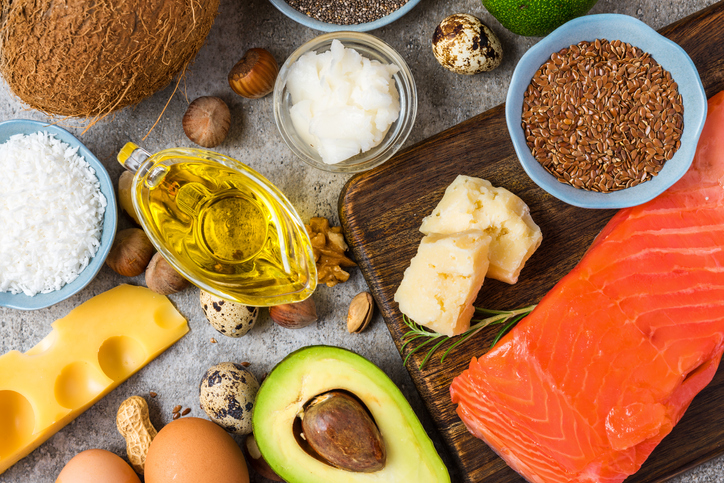
How Does Ice Hack Weight Loss Work?
Ice hack weight loss operates on the fundamental principle of utilizing cold exposure-induced thermogenesis to potentially aid in calorie burning and weight management.
When the body is exposed to cold temperatures, it triggers a physiological response known as thermogenesis. This response is the body’s way of generating heat to maintain its core temperature in colder environments. To achieve this, the body expends energy, thereby burning calories in the process.
The principle behind ice hack weight loss lies in leveraging this natural response of the body to cold stimuli. By subjecting oneself to cold environments or using specific cold exposure techniques, individuals aim to stimulate thermogenesis, thereby increasing the calorie expenditure of the body.
Scientific research has suggested that cold exposure could activate brown adipose tissue, commonly known as brown fat. Unlike white fat, which stores energy, brown fat specializes in burning calories to produce heat. This activation of brown fat, induced by prolonged exposure to cold, potentially contributes to increased calorie burning.
Moreover, the activation of brown fat may enhance metabolic rate and contribute to overall calorie expenditure, potentially aiding in weight loss efforts. However, it’s important to note that while ice hack weight loss capitalizes on the body’s response to cold exposure, its efficacy and individual outcomes may vary based on several factors.
The mechanisms underlying ice hack weight loss reveal its potential to influence the body’s metabolism and calorie-burning capacity through cold-induced thermogenesis. This approach presents an intriguing pathway for those seeking alternative methods to support their weight loss journeys.
Nevertheless, while the concept of ice hack weight loss is intriguing, caution and understanding are crucial. Practitioners should approach these techniques with moderation, considering factors such as individual tolerance to cold, existing health conditions, and the guidance of healthcare professionals.
In essence, ice hack weight loss relies on leveraging the body’s natural response to cold exposure to potentially enhance calorie burning and aid in weight management. Understanding its mechanisms and limitations is essential before incorporating these techniques into one’s lifestyle.
The Role of Cold Exposure in Burning Calories

Cold exposure plays a pivotal role in influencing the body’s metabolism and calorie expenditure, offering insights into potential avenues for weight management.
When the body experiences cold temperatures, it triggers a series of physiological responses aimed at maintaining its core temperature. One such response is thermogenesis, the process by which the body generates heat to counteract the cold environment. This mechanism involves burning additional calories as the body works to regulate its temperature.
A crucial element in this process is the activation of brown adipose tissue, or brown fat. Unlike white fat, which primarily stores energy, brown fat specializes in burning calories to generate heat. Studies have shown that prolonged exposure to cold can activate and increase the activity of brown fat, thereby contributing to increased calorie burning.
The activation of brown fat through cold exposure results in the production of heat, which necessitates additional energy expenditure. As a result, the body consumes more calories to maintain its thermal balance in colder conditions. This heightened calorie burning might offer benefits in supporting weight management efforts by potentially contributing to overall calorie expenditure.
Moreover, research indicates that the activation of brown fat through cold exposure may lead to improvements in metabolic rate. A boosted metabolism means an increase in the rate at which the body burns calories, even during periods of rest. This implies that the effects of cold exposure might extend beyond the immediate time frame of exposure, potentially aiding in long-term weight management goals.
However, it’s crucial to note that while cold exposure-induced calorie burning through brown fat activation shows promise, its impact on weight loss might vary among individuals. Factors such as age, gender, body composition, and overall health can influence the body’s response to cold exposure.
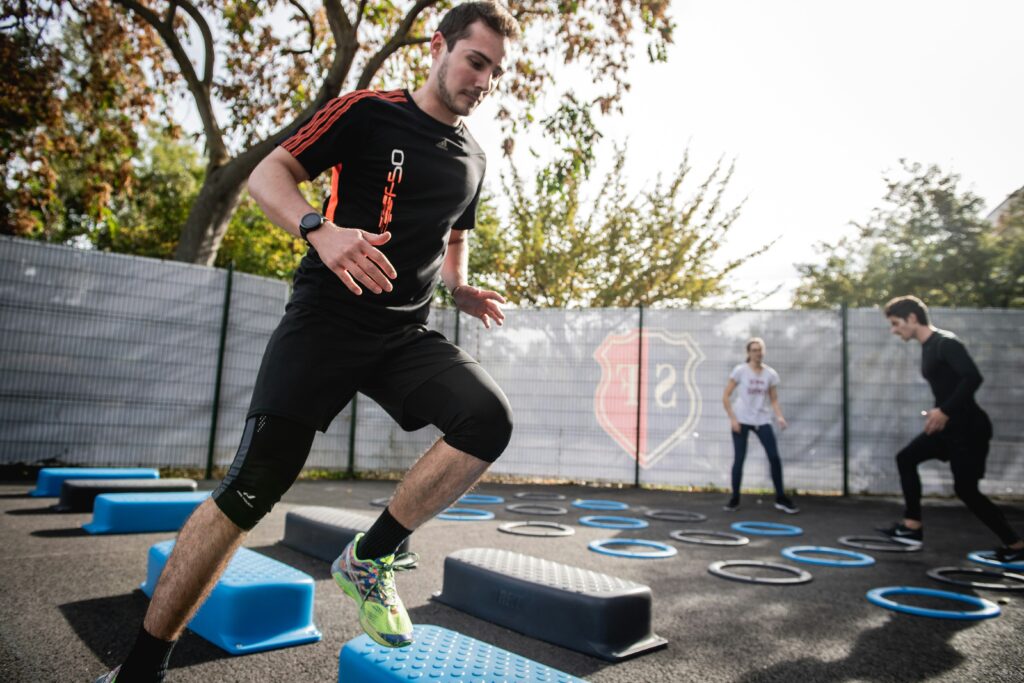
Additionally, relying solely on cold exposure for weight loss might not yield significant results without incorporating other healthy lifestyle practices, such as a balanced diet and regular exercise.
In conclusion, the role of cold exposure in burning calories is primarily linked to its ability to activate brown fat and induce thermogenesis, leading to increased calorie expenditure. Understanding this process sheds light on potential strategies for supporting weight management. However, leveraging cold exposure as a weight loss tool should be part of a holistic approach to healthy living and not viewed as a standalone solution.
The Benefits of Ice Hack Weight Loss

Boosting Metabolism
One of the significant benefits attributed to ice hack weight loss techniques is their potential to boost metabolism. Metabolism refers to the complex biochemical processes in the body responsible for converting food and drink into energy.
Cold exposure, as utilized in ice hack weight loss, has been linked to an increase in metabolic rate. When the body is subjected to cold temperatures, it activates thermogenesis, where it expends additional energy to generate heat and maintain a stable internal temperature.
The activation of brown adipose tissue (brown fat) through cold exposure plays a key role in this process. Brown fat specializes in burning calories to produce heat, thereby potentially elevating the body’s calorie-burning capacity.
Studies have indicated that prolonged exposure to cold can stimulate brown fat activity, leading to increased calorie expenditure. This increase in calorie burning may not only occur during the cold exposure itself but can also extend into periods of rest.
Boosting metabolism through ice hack weight loss techniques implies that the body continues to burn more calories even when at rest, offering potential benefits for weight management. A higher metabolic rate means a more efficient burning of calories from food and drink, potentially aiding in weight loss or weight maintenance efforts.
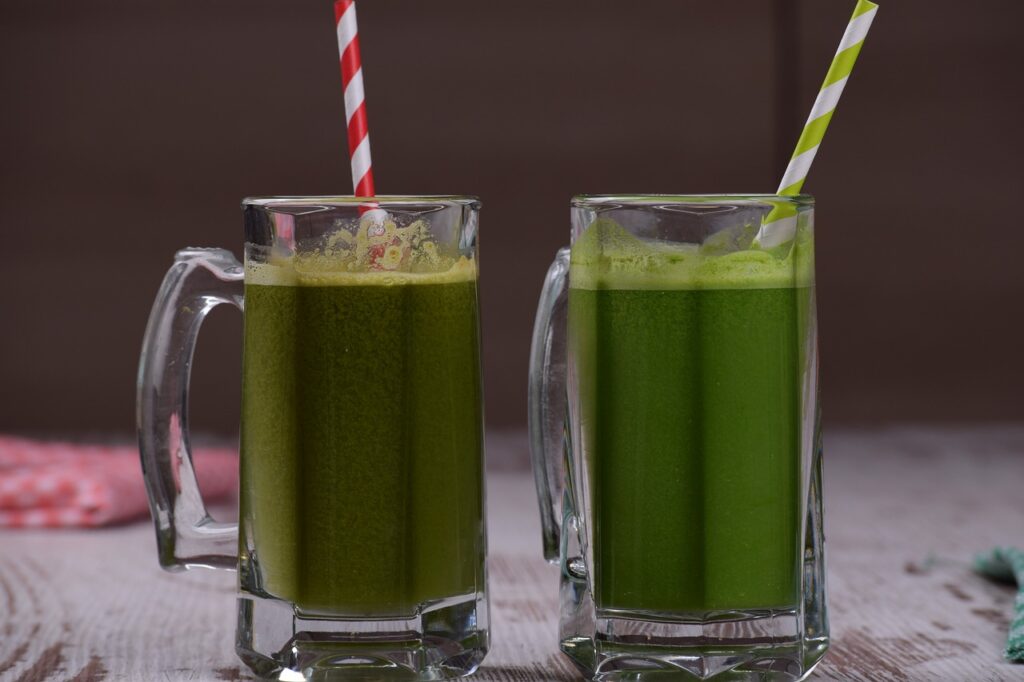
However, it’s important to note that while the concept of increasing metabolism through cold exposure sounds promising, the extent of its impact on overall weight loss might vary among individuals. Factors such as age, gender, genetics, body composition, and overall health play roles in determining the degree of response to these techniques.
Moreover, while ice hack weight loss methods might offer benefits in boosting metabolism, they should not be viewed as a standalone solution for weight management. Incorporating a balanced diet, regular exercise, and overall healthy lifestyle practices remain integral components of a comprehensive approach to achieving and maintaining a healthy weight.
In conclusion, the potential of ice hack weight loss techniques in boosting metabolism lies in their ability to activate brown fat and increase calorie burning. This heightened metabolic rate, when combined with a healthy lifestyle, may contribute to supporting weight management goals.
Enhancing Fat Burning
One of the intriguing aspects of ice hack weight loss techniques is their potential to target and enhance fat burning within the body. Cold exposure, a fundamental component of these methods, is believed to play a role in facilitating the breakdown of fat cells.
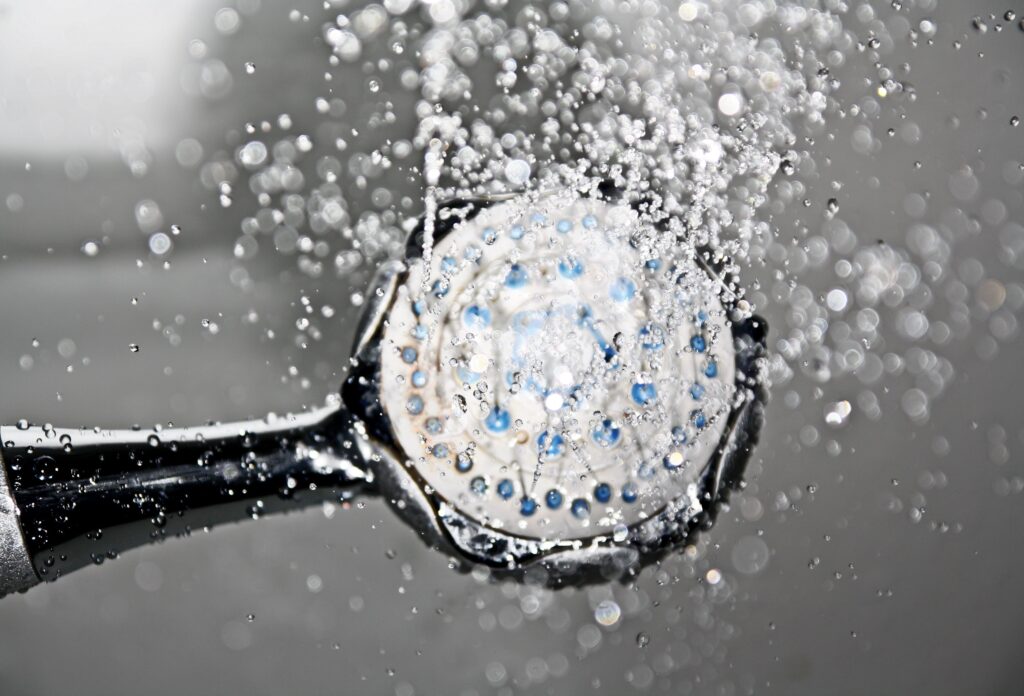
When the body is exposed to cold temperatures through various ice hack techniques like cold showers, ice packs, or cryotherapy, it triggers a process known as thermogenesis. This process requires the body to generate heat to maintain its core temperature, leading to increased calorie burning.
One of the key factors contributing to enhanced fat burning during cold exposure is the activation of brown adipose tissue, or brown fat. Unlike white fat, which primarily stores energy, brown fat specializes in burning calories to produce heat.
Research suggests that prolonged exposure to cold can stimulate the activation and activity of brown fat. This activation prompts brown fat cells to metabolize stored fat to generate heat, potentially aiding in the reduction of fat deposits within the body.
The stimulation of brown fat through cold exposure might target specific areas where stubborn fat is commonly stored. Consequently, this targeted fat burning could lead to a reduction in adipose tissue in those regions, contributing to overall fat loss.
However, it’s important to understand that while ice hack weight loss techniques might hold promise in enhancing fat burning, their efficacy can vary among individuals. Factors such as genetics, age, body composition, and overall health can influence the body’s response to these methods.

Furthermore, relying solely on ice hack techniques for fat burning might not yield significant results without a comprehensive approach that includes a balanced diet and regular exercise. These techniques should be considered as potential complementary tools in a broader strategy for achieving and maintaining a healthy weight.
In conclusion, the potential of ice hack weight loss techniques in enhancing fat burning lies in their ability to activate brown fat and stimulate calorie burning, specifically targeting fat stores. Integrating these methods as part of a comprehensive approach to a healthy lifestyle may offer benefits in aiding fat loss efforts.
Improving Circulation and Recovery

Ice hack weight loss techniques, involving cold exposure in various forms, may offer benefits beyond aiding in weight management. These methods have been associated with potential improvements in blood circulation and post-exercise recovery.
Cold exposure, such as cold showers, ice baths, or cryotherapy, can have vasoconstrictive effects, causing blood vessels to narrow temporarily. When the body is exposed to cold, blood vessels constrict, reducing blood flow to the exposed area. Once the cold exposure ceases, the blood vessels dilate, leading to an increased flow of blood.
This process of vasoconstriction followed by vasodilation is believed to promote blood circulation. Improved circulation means better nutrient and oxygen delivery to tissues and organs throughout the body. Enhanced circulation can potentially support overall cardiovascular health and aid in the recovery process after physical activities.

Furthermore, cold exposure has been utilized in sports and fitness as a means of facilitating recovery. Athletes often use techniques like ice baths or cryotherapy to reduce inflammation, alleviate muscle soreness, and expedite recovery after intense workouts or competitions.
Cold exposure may help in reducing post-exercise muscle inflammation by constricting blood vessels and decreasing tissue temperature. This constriction can potentially reduce the inflammatory response and subsequent muscle soreness, allowing for quicker recovery and potentially enhanced performance in subsequent workouts.
However, it’s important to approach cold exposure techniques cautiously, especially in the context of recovery. Excessive or prolonged cold exposure may lead to adverse effects such as skin damage or frostbite. Additionally, individuals with certain health conditions or sensitivities to cold should seek advice from healthcare professionals before adopting these techniques for recovery purposes.
In summary, ice hack weight loss methods that involve cold exposure might contribute to improved blood circulation and expedited recovery after physical exertion. Leveraging these techniques cautiously and under proper guidance could potentially offer benefits in supporting overall well-being and post-exercise recuperation.
Implementing Ice Hack Weight Loss Techniques
1- Cold Showers and Baths
Cold showers and baths are among the accessible and commonly practiced methods in ice hack weight loss techniques. These techniques involve exposing the body to cold water for a certain duration, aiming to stimulate the body’s thermogenic response.

Methodology
Cold Showers:
Taking cold showers involves turning the water temperature down to cooler levels during a regular shower. This method typically starts with warm water and gradually transitioning to cold water for a few minutes towards the end of the shower.
Cold Baths:
Cold baths, on the other hand, entail submerging the body in a tub filled with cold water. Some practitioners add ice cubes to make the water even colder. The duration of a cold bath can vary, ranging from a few minutes to longer periods, depending on individual tolerance.
Mechanism:
Both cold showers and baths trigger thermogenesis in the body, stimulating brown fat activation and initiating calorie burning to generate heat. The sudden exposure to cold water prompts vasoconstriction (narrowing of blood vessels), followed by vasodilation (widening of blood vessels) after the exposure ends, enhancing blood circulation.
Benefits:
Boosting Metabolism: Cold showers and baths may increase metabolic rate, leading to more calories burned throughout the day.
Improving Circulation: The vasoconstriction and subsequent vasodilation stimulated by cold exposure can contribute to better blood flow, potentially enhancing overall circulation.
Enhancing Recovery: Some individuals use cold baths as a method of post-workout recovery to reduce inflammation and muscle soreness.
Safety Considerations:
Gradual Adaptation: Beginners should start with shorter duration of cold exposure and gradually increase the time as the body adapts to the sensation.
Avoiding Extreme Cold: Extreme cold exposure for extended periods can lead to adverse effects such as frostbite or shock. It’s crucial to find a balance that is tolerable and safe for individual comfort.
Conclusion:
Cold showers and baths serve as accessible methods to incorporate cold exposure into daily routines. While they offer potential benefits in boosting metabolism and improving circulation, it’s essential to approach these techniques gradually and cautiously to avoid any adverse effects.
2- Ice Packs and Cold Compressions
Ice packs and cold compressions serve as localized methods within ice hack weight loss techniques. These approaches involve applying cold temperatures to specific areas of the body with the aim of targeting fat deposits or aiding in recovery.

Methodology:
Ice Packs:
Ice packs consist of frozen gel or ice enclosed in a pack or a towel. These packs are applied directly to targeted body areas, such as the abdomen, thighs, or other areas with stubborn fat.
Cold compressions:
Cold compressions involve wrapping or compressing the targeted area with a cloth or bandage soaked in cold water or containing ice packs.

Mechanism:
The application of ice packs or cold compressions to specific body areas induces localized cold exposure. This cold stimulus triggers vasoconstriction in the targeted region, reducing blood flow and causing a temporary decrease in temperature. Once the cold stimulus is removed, blood flow increases, promoting potential fat metabolism and aiding in the reduction of fat in those areas.
Benefits:
Targeting Stubborn Fat Deposits:
Extended periods of cold application can lead to skin damage or frostbite. It’s advisable to limit the duration of application and use protective barriers, such as towels, between the ice pack and the skin.
Reducing Swelling and Inflammation:
Cold temperatures can help in reducing inflammation, swelling, and soreness in localized areas, contributing to post-exercise recovery.

Safety Considerations:
Avoiding Prolonged Exposure:
Extended periods of cold application can lead to skin damage or frostbite. It’s advisable to limit the duration of application and use protective barriers, such as towels, between the ice pack and the skin.
Monitoring Skin Sensation:
Individuals should pay attention to skin sensations like numbness or excessive cold, as these might indicate potential adverse effects.
Conclusion:
Ice packs and cold compressions offer a targeted approach to cold exposure within ice hack weight loss techniques. While they may provide benefits in targeting specific fat deposits and aiding in recovery, practicing these methods cautiously and with moderation is crucial to prevent potential adverse effects.
3- Cryotherapy and Cool Sculpting
Cryotherapy and Cool Sculpting represent advanced methods within the realm of ice hack weight loss techniques. These approaches offer more controlled and targeted cold exposure, aiming to facilitate fat reduction and potentially enhance weight loss.
Cryotherapy

Methodology
The process of cryotherapy entails briefly subjecting the body to extremely low temperatures. This is typically achieved through whole-body cryotherapy (WBC) or localized cryotherapy. In WBC, individuals enter a cryotherapy chamber where temperatures drop significantly, usually reaching around -100°C (-148°F) for a few minutes. Localized cryotherapy involves targeting specific body areas with a focused stream of cold air.
Mechanism:
The extreme cold exposure in cryotherapy triggers vasoconstriction and activates brown fat, leading to increased calorie burning. WBC is believed to elicit a systemic response, potentially affecting metabolism and promoting fat burning throughout the body.
Cool Sculpting
Methodology:
Cool Sculpting, also known as cryolipolysis, is a non-invasive procedure that targets and freezes fat cells beneath the skin’s surface. The device selectively freezes and destroys fat cells without harming surrounding tissues. The body’s metabolic processes eventually cause these damaged fat cells to be gradually eliminated.
Mechanism:
During Cool Sculpting, the targeted fat cells are exposed to controlled cooling, causing them to crystallize and undergo apoptosis, a natural cell death process. Over several weeks, the body gradually removes these damaged fat cells, resulting in a reduction of fat in the treated area.

Benefits:
Targeted Fat Reduction:
Both cryotherapy and Cool Sculpting aim to target specific areas where fat accumulates, such as the abdomen, thighs, or flanks, with the potential to reduce localized fat deposits.
Potential for Increased Metabolism:
Cryotherapy, especially whole-body cryotherapy, might induce a systemic response that can potentially enhance metabolic rate and promote calorie burning.
Safety Considerations:
Professional Guidance:
Both cryotherapy and Cool Sculpting should be administered by trained professionals to ensure safety and proper application.

Potential Side Effects:
Side effects such as redness, swelling, bruising, or temporary numbness might occur after these procedures. Consulting a healthcare professional is advisable.
Conclusion:
Cryotherapy and Cool Sculpting represent more advanced and targeted approaches within ice hack weight loss techniques. While they offer potential benefits in targeted fat reduction and possibly enhancing metabolism, it’s essential to undergo these procedures under professional supervision and be aware of potential side effects.
Safety Considerations and Precautions
Potential Risks and Side Effects
While ice hack weight loss techniques offer potential benefits, it’s crucial to be aware of potential risks and side effects associated with these practices. Understanding these risks and taking necessary precautions is essential to ensure safety and mitigate any adverse effects.
Potential Risks:
Skin Damage:
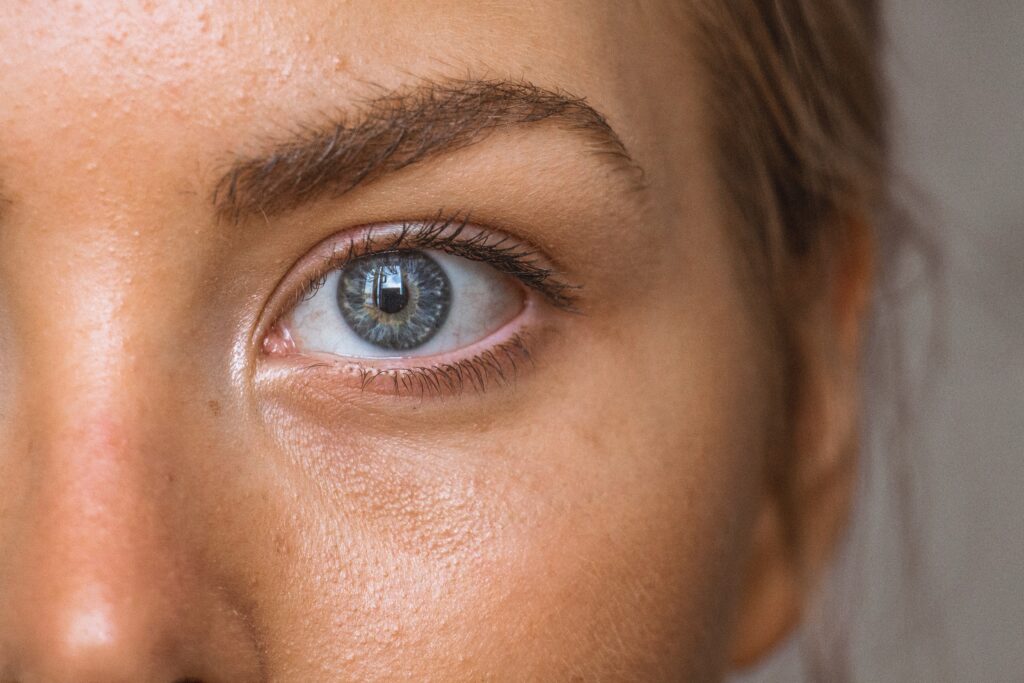
Prolonged exposure to extreme cold, such as in cryotherapy or prolonged cold showers, can lead to skin damage, including frostbite or skin irritation. Protecting the skin and avoiding excessive exposure is crucial.
Adverse Reactions:
Some individuals might experience adverse reactions to extreme cold, including allergic reactions or exacerbation of conditions like Raynaud’s disease, a condition causing reduced blood flow to extremities in response to cold or stress.
Worsening of Health Conditions:
Individuals with certain health conditions, such as cardiovascular issues, hypertension, or chronic illnesses, should exercise caution with cold exposure techniques, as extreme cold can potentially worsen these conditions.
Side Effects:
Redness and Swelling:
Following cold exposure techniques like cryotherapy or Cool Sculpting, individuals might experience temporary redness, swelling, or skin irritation in the treated areas.

Numbness and Tingling (Paresthesia):
Some individuals might experience temporary numbness or tingling sensations in the exposed areas following cold exposure, which typically resolves within a short period.
Bruising or Skin Sensitivity:
Cold exposure methods might lead to bruising or increased skin sensitivity in some individuals, particularly after localized applications like ice packs or cold compressions.
Precautions:
Professional Guidance:
Seek guidance from trained professionals or healthcare providers before initiating any ice hack weight loss techniques, especially if you have underlying health conditions or concerns.
Gradual Adaptation:
Start with shorter duration or lower intensities when practicing cold exposure techniques. Gradually increase exposure times as the body adapts to the sensation.
Monitoring Reactions:
Pay attention to your body’s responses to cold exposure. If you experience excessive discomfort, numbness, or unusual reactions, discontinue the practice and seek medical advice.
Conclusion:
While ice hack weight loss techniques offer potential benefits, it’s crucial to approach these practices with caution and awareness of potential risks and side effects. Consulting healthcare professionals, practicing moderation, and monitoring body reactions are essential steps in ensuring safety while engaging in these methods.
Who Should Avoid Ice Hack Weight Loss Methods?
While ice hack weight loss methods offer potential benefits, certain individuals should exercise caution or avoid these techniques altogether due to specific health conditions or sensitivities. Understanding who should refrain from these practices is crucial to prevent potential risks or adverse effects.
Individuals with Cardiovascular Issues:
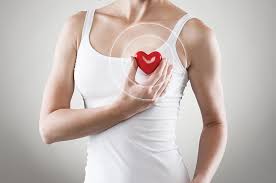
People with cardiovascular conditions, such as heart disease, hypertension (high blood pressure), or those who have had a recent heart attack or stroke, should avoid intense cold exposure techniques. Extreme cold can potentially strain the cardiovascular system, leading to complications or exacerbating existing conditions.
Those with Raynaud’s Disease or Cold Sensitivity:

Individuals with Raynaud’s disease, a condition causing reduced blood flow to extremities in response to cold or stress, should avoid prolonged or intense cold exposure. Cold sensitivity can trigger episodes of Raynaud’s phenomenon, causing discomfort or complications.
People with Chronic Health Conditions:
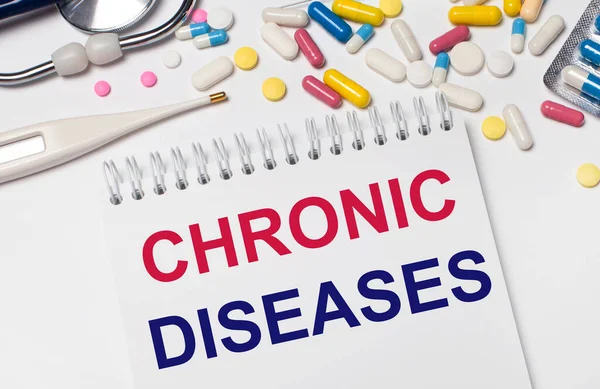
Those with chronic health conditions, such as diabetes, autoimmune disorders, or neurological conditions, should consult healthcare professionals before attempting ice hack weight loss methods. Cold exposure might exacerbate symptoms or negatively impact these conditions.
Pregnant Women:

Pregnant women should avoid extreme cold exposure or intense ice hack weight loss methods. Sudden temperature changes or extreme cold can potentially affect the circulatory system, posing risks to both the mother and the developing fetus.
Individuals with Cold-Induced Allergies or Reactions:
People who have a history of allergic reactions or adverse responses to cold exposure, such as cold-induced urticaria (hives) or cold-induced asthma, should refrain from ice hack weight loss techniques. Extreme cold can trigger allergic responses or exacerbate existing conditions.
Conclusion:
Certain individuals, including those with cardiovascular issues, cold-related conditions, chronic health concerns, pregnant women, and those prone to cold-induced reactions, should avoid or approach ice hack weight loss methods with caution. Prior consultation with healthcare professionals is crucial to determine the suitability and potential risks associated with these techniques for individuals with specific health conditions.
Tips for Successful Ice Hack Weight Loss

Gradual Implementation.
Gradual implementation is a fundamental aspect of incorporating ice hack weight loss techniques into one’s routine. These methods, involving exposure to cold temperatures, necessitate a patient and progressive approach to allow the body to acclimate to the changes without experiencing undue stress or adverse effects.
Understanding the Body’s Adaptation:
When introducing ice hack weight loss techniques, it’s crucial to recognize that the body requires time to adapt to the cold stimulus. Starting gradually allows physiological adjustments to take place, such as increasing brown fat activation and improving the body’s response to cold exposure.
Starting Small:
Commence by initiating exposure to cold in small increments. For example, in the case of cold showers, begin by concluding a regular shower with a short burst of cold water at the end. Similarly, when using ice packs or cold compressions, start with brief applications to specific body areas and gradually increase the duration.
Incremental Increases:
As the body begins to adapt, progressively extend the duration or intensity of cold exposure. For instance, gradually lengthen the time spent in cold showers by a few seconds each day or increase the frequency and duration of using ice packs or cold compressions when the feeling grows more familiar to your body.
Listening to the Body’s Signals:
Throughout the gradual implementation process, pay close attention to your body’s responses. Note any signs of discomfort, excessive shivering, or numbness. These signals indicate your body’s limits, and it’s crucial to respect them by adjusting the intensity or duration of cold exposure accordingly.
Consistency and Patience:
Consistency is key in achieving successful adaptation to ice hack weight loss techniques. Incorporating these methods into your routine regularly allows the body to adapt more efficiently. Patience is essential; the benefits of these techniques often manifest gradually over time with consistent practice.
Professional Guidance:
Seek guidance from healthcare professionals or experienced practitioners before starting ice hack weight loss methods, particularly if you have pre-existing health conditions or concerns. Their advice can offer insights into safe practices and personalized approaches suitable for your individual circumstances.
Conclusion:
Gradual implementation is a cornerstone of successfully integrating ice hack weight loss techniques into daily routines. By starting small, increasing exposure incrementally, listening to your body, maintaining consistency, and seeking professional advice, individuals can effectively adopt these methods while prioritizing safety and long-term effectiveness.
Importance of Consulting a Healthcare Professional in Ice Hack Weight Loss Techniques

When considering ice hack weight loss techniques, consulting a healthcare professional plays a pivotal role in ensuring safety, suitability, and effectiveness. Seeking guidance from a qualified healthcare provider offers valuable insights and personalized advice tailored to individual health conditions and needs.
Assessing Individual Health Status:
A healthcare professional can conduct a thorough assessment of your health status, taking into account factors such as pre-existing medical conditions, medications, allergies, and overall health history. This assessment helps in determining the suitability of ice hack weight loss methods and identifying potential risks.
Personalized Recommendations:
Based on the individual assessment, healthcare professionals can provide personalized recommendations regarding the adoption of ice hack weight loss techniques. They can offer insights into which methods might be safe and effective for specific individuals while advising against those that could pose risks or complications.
Guidance on Safety Measures:
Healthcare professionals can educate individuals about safety measures and precautions associated with cold exposure techniques. They provide guidance on how to practice these methods safely, including recommended duration, frequencies, and warning signs to watch for in case of adverse reactions.
Tailoring Approaches for Health Conditions:
For individuals with underlying health conditions such as cardiovascular issues, diabetes, or autoimmune disorders, healthcare professionals can tailor approaches to suit their needs. They offer modified or alternative techniques that minimize potential risks and adverse effects while still working towards weight management goals.
Monitoring and Follow-Ups:
Healthcare professionals can monitor progress and provide follow-up care, ensuring that ice hack weight loss methods are well-tolerated and effective. They can adjust recommendations based on individual responses or changes in health status, optimizing the safety and effectiveness of these techniques.
Preventing Complications:
Consulting a healthcare professional helps in preventing potential complications that may arise from inappropriate use of ice hack weight loss techniques. Their guidance assists in avoiding adverse effects or exacerbation of existing health conditions, ensuring overall well-being while pursuing weight loss goals.
Conclusion:
Consulting a healthcare professional before initiating ice hack weight loss techniques is paramount for personalized guidance, assessing health status, receiving tailored recommendations, ensuring safety measures, and preventing complications. Their expertise ensures that these methods are practiced in a manner that promotes both weight management and overall health.
Importance of Monitoring Body Responses in Ice Hack Weight Loss Techniques

Monitoring the body’s responses to ice hack weight loss techniques is essential for ensuring safety, assessing tolerance, and optimizing the effectiveness of these practices. Understanding how the body reacts to cold exposure helps in adjusting the methods accordingly and identifying any potential concerns.
Recognizing Comfort Levels:
Observing your comfort levels during cold exposure techniques is crucial. Observe your body’s sensation both during and after the exercise. Sensations of extreme discomfort, excessive shivering, or prolonged discomfort might indicate the need to adjust the intensity or duration of cold exposure.
Assessing Skin Reactions:
Observe skin reactions following cold exposure. Look for signs of redness, irritation, or skin discoloration, particularly in areas directly exposed to cold temperatures. These reactions can indicate skin sensitivity or potential skin damage, prompting the need for adjustments or discontinuation of the technique.
Noting Numbness or Tingling Sensations:
Feelings of numbness or tingling in the exposed areas might occur during or after cold exposure. While mild sensations might be expected due to the cold stimulus, prolonged or severe numbness could indicate excessive cold exposure and might require adjustments in intensity or duration.
Monitoring Overall Well-being:
Pay attention to your overall well-being following cold exposure techniques. Look for changes in energy levels, mood, or any unusual symptoms. Feeling excessively fatigued, dizzy, or experiencing persistent discomfort could indicate that the practice needs modification or discontinuation.
Tracking Recovery:
Observe how your body recovers after cold exposure. Note the duration it takes for sensations like numbness or tingling to subside and whether any lingering discomfort persists. Monitoring recovery helps gauge how well your body tolerates the techniques and aids in making necessary adjustments.
Documenting Responses:
Keeping a record of your body’s responses to cold exposure techniques can provide valuable insights. Maintain a journal detailing the duration, frequency, and your body’s reactions. This documentation assists in identifying patterns, making informed adjustments, and discussing concerns with healthcare professionals if needed.
Conclusion:
Monitoring the body’s responses to ice hack weight loss techniques is crucial for assessing comfort levels, skin reactions, sensations of numbness or tingling, overall well-being, recovery patterns, and documenting experiences. This vigilance allows for adjustments in the practices, ensuring safety and optimizing the effectiveness of these methods.
Debunking Myths Around Ice Hack Weight Loss
Ice hack weight loss methods, involving cold exposure techniques like cold showers, cryotherapy, or using ice packs, have gained attention for their purported ability to aid in weight management. However, amidst the buzz surrounding these techniques, several myths and misconceptions have emerged. Let’s debunk some of these myths.

Myth 1: Cold Exposure Alone Leads to Significant Weight Loss
Reality: While cold exposure techniques can potentially increase calorie expenditure, the idea that solely exposing oneself to cold temperatures leads to substantial weight loss is a misconception. Weight management remains a multifaceted process involving diet, exercise, lifestyle habits, and overall calorie balance.
Myth 2: Cold Exposure Eliminates All Fat Cells
Reality: Cold exposure techniques might target specific fat deposits, but they don’t eliminate all fat cells in the body. These methods may assist in breaking down fat cells or triggering a process called apoptosis (cell death), but they don’t completely eradicate fat cells throughout the body.
Myth 3: Ice Packs or Cold Showers Alone Can Replace Exercise
Reality: While cold exposure might have some metabolic benefits, it cannot replace the advantages of regular exercise. Physical activity offers diverse health benefits beyond weight loss, including cardiovascular health, muscle strength, flexibility, and mental well-being, which cold exposure techniques alone cannot replicate.
Myth 4: Cold Exposure Techniques Require Extreme and Prolonged Exposure
Reality: Optimal benefits from cold exposure techniques don’t necessarily entail extreme or prolonged exposure to cold. Gradual implementation, starting with shorter duration and progressively increasing exposure, can yield benefits without subjecting oneself to extreme discomfort or risks of cold-related injuries.
Myth 5: Cold Exposure Alone Is the Key to Sustainable Weight Loss
Reality: Sustainable weight loss results from a balanced approach involving various factors such as a nutritious diet, regular physical activity, adequate sleep, stress management, and overall healthy lifestyle habits. Cold exposure techniques might complement these efforts but are not standalone solutions for long-term weight management.
Conclusion:
Dispelling myths around ice hack weight loss techniques is crucial for a balanced understanding of their role in weight management. While these methods may offer some benefits, it’s essential to approach them as complementary tools within a broader framework of healthy lifestyle choices rather than standalone solutions for achieving sustainable weight loss.
Available supplements for Ice hack weight loss
When it comes to supplements for ice hack weight loss, there are several options available in the market that claim to complement or enhance the effects of cold exposure techniques. However, it’s crucial to note that scientific evidence supporting the direct effectiveness of supplements specifically for ice hack weight loss may be limited. Here are some supplements that are commonly associated with weight loss and may be considered in conjunction with ice hack techniques:
1. Omega-3 Fatty Acids:
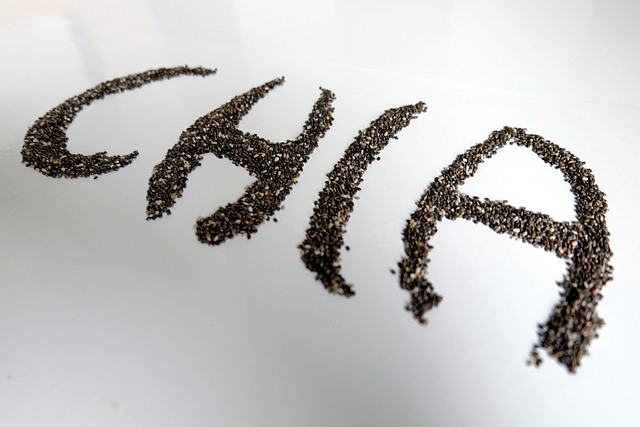
Omega-3 supplements, typically sourced from fish oil, are known for their various health benefits, including potential assistance in weight management. They might help improve fat metabolism and reduce inflammation, potentially complementing the effects of cold exposure techniques.
2. Caffeine:
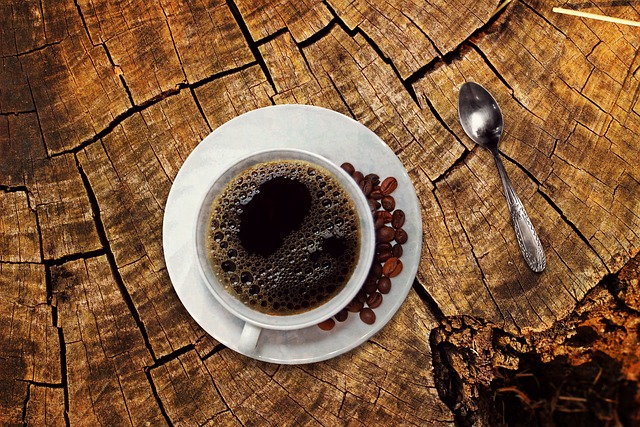
Caffeine is often used as a supplement to boost metabolism and enhance fat burning. Some individuals use caffeine supplements or drinks before workouts, which might synergize with the increased metabolic rate induced by cold exposure.
3. Green Tea Extract:

Green tea contains compounds like catechins, which are believed to have thermogenic properties that aid in fat oxidation. Supplements containing green tea extract are sometimes used as a complementary measure for weight management.
4. Capsaicin:
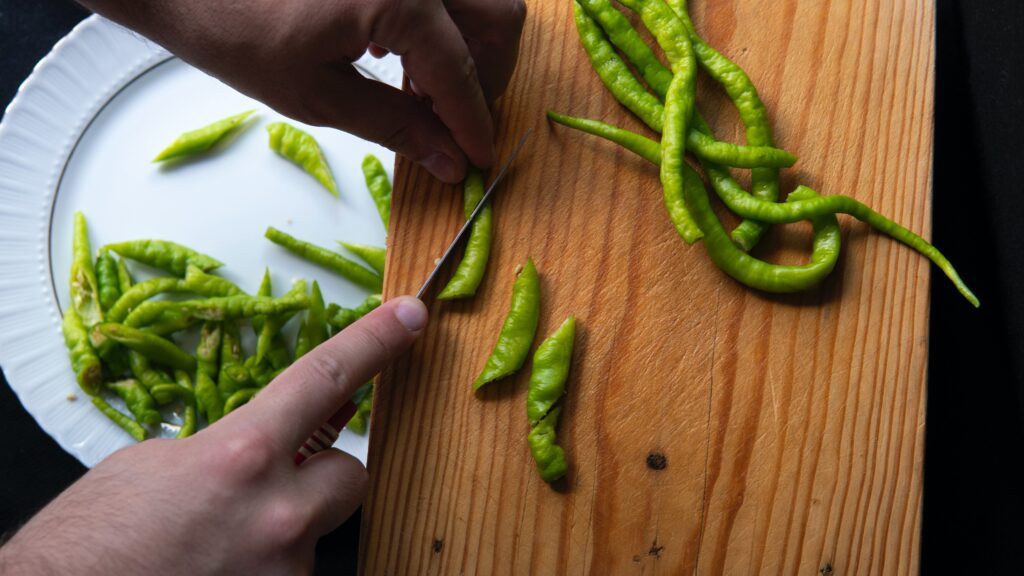
Capsaicin, found in chili peppers, is believed to have metabolism-boosting properties and could potentially enhance the effects of cold exposure by promoting thermogenesis and increasing calorie expenditure.
5. Protein Supplements:
Protein supplements, such as whey protein or plant-based protein powders, may assist in weight management by supporting muscle growth and repair. They could complement a balanced diet when combined with ice hack weight loss techniques.
6. Vitamin D:

Vitamin D supplementation has been linked to potential improvements in weight management and metabolic health. Adequate levels of vitamin D may support overall health and potentially aid in weight loss efforts.
7. Adaptogens:
Certain adaptogenic herbs, such as Rhodiola rosea or Ashwagandha, are believed to help the body adapt to stress. While not directly linked to weight loss, they might support overall well-being during weight management efforts.
8. Alpilean:
One of the most popular supplement used for ice hack weight loss is Alpilean. Major ingredients present in Alpilean are,

- Dika nut (African mango seed)
- Golden algae (fucoxanthin)
- Drumstick tree leaf (moringa)
- Bigarade orange (citrus bioflavonoids)
- Ginger root
- Turmeric root
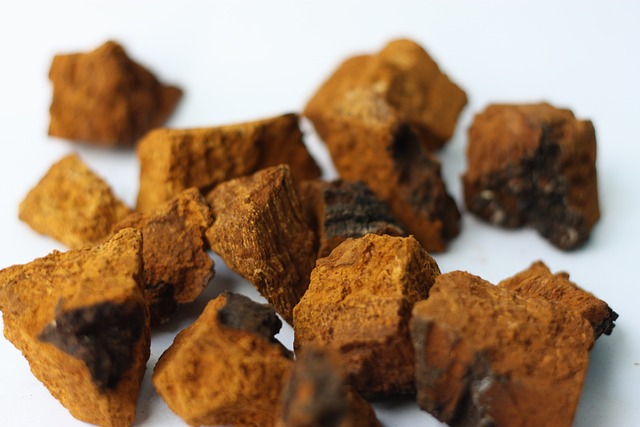
Final Thoughts
Ice hack weight loss presents an intriguing avenue in the realm of weight management. While showing potential benefits in boosting metabolism and aiding fat loss, it’s crucial to approach these techniques with caution, considering individual health and safety. Embracing a well-rounded approach to health and fitness remains essential for sustainable results.
All the relevant details are given in this article. Further more you can contact our team by having CONTACT US any time.
Important Note:
Before considering any supplements, it’s crucial to consult with a healthcare professional or a registered dietitian. They can provide personalized advice based on individual health conditions, potential interactions with medications, and ensure safe and effective supplementation. Also, adherence to a balanced diet and regular exercise remains crucial for overall weight management, irrespective of supplementation.
Addressing Common FAQs on Ice Hack Weight Loss
What is the Ice Hack Weight Loss method?
The Ice Hack Weight Loss method is a technique that involves exposing the body to cold temperatures to stimulate fat loss. It’s based on the concept of thermogenesis, where the body burns more calories to generate heat in response to cold exposure.
How does the Ice Hack Weight Loss method work?
Cold exposure is believed to activate brown fat, a type of fat tissue that burns calories to generate heat. This process, known as thermogenesis, can potentially increase metabolic rate and lead to calorie burning, aiding in weight loss.
What are the different ways to apply the Ice Hack Weight Loss method?
Methods can include taking cold showers, immersing in cold water baths or cryotherapy chambers, using ice packs on specific areas of the body, or incorporating cold exposure into workouts (e.g., cold weather workouts or wearing cooling vests during exercise).
Is the Ice Hack Weight Loss method effective for losing weight?
While some studies suggest that cold exposure can increase calorie expenditure, it’s important to note that the overall impact on weight loss may vary among individuals. Diet and exercise play significant roles in achieving weight loss goals, and using the Ice Hack method alone may not lead to substantial or sustainable weight loss.
Are there any risks or side effects associated with the Ice Hack Weight Loss method?
Skin irritation, numbness, or discomfort can result from being in the cold. Prolonged exposure to extreme cold temperatures can lead to frostbite or hypothermia, so it’s crucial to practice this method safely and gradually increase exposure over time.
Can anyone try the Ice Hack Weight Loss method?
Individuals with certain medical conditions, such as cardiovascular issues, respiratory problems, or conditions exacerbated by cold exposure, should consult a healthcare professional before attempting this method. Pregnant women and children should also be cautious and seek medical advice.
Is the Ice Hack Weight Loss method a long-term solution?
While incorporating occasional cold exposure into a healthy lifestyle may have benefits, solely relying on this method for weight loss without addressing overall diet and exercise habits may not lead to sustainable long-term results.
Should I combine the Ice Hack Weight Loss method with other weight loss strategies?
For optimal results, combining cold exposure techniques with a balanced diet and regular exercise regimen is recommended. Consultation with a healthcare professional or a certified fitness expert can help create a personalized weight loss plan.
Are there any specific guidelines to follow while practicing the Ice Hack Weight Loss method?
Gradually increase exposure to cold temperatures, listen to your body’s signals, and avoid extreme cold for extended periods. Stay hydrated, wear appropriate clothing, and be mindful of any adverse reactions during cold exposure.
Where can I find more information about the Ice Hack Weight Loss method?
Reliable sources such as reputable health websites, scientific journals, or consulting with healthcare professionals knowledgeable about cold exposure methods can provide further guidance and information regarding this weight loss technique.
How long should I expose myself to cold temperatures for the Ice Hack Weight Loss method to be effective?
There’s no specific duration established for optimal results. Start with shorter exposures, such as a few minutes in a cold shower or immersion in cold water, and gradually increase time as your body adjusts. Pay attention to how you feel and avoid prolonged exposure at extreme cold temperatures.
Can the Ice Hack Weight Loss method target specific areas for fat loss?
There’s limited evidence supporting spot reduction through cold exposure. While some may suggest applying ice packs to certain areas, overall weight loss tends to be more systemic rather than localized.
Is there scientific evidence supporting the effectiveness of the Ice Hack Weight Loss method?
Research on the impact of cold exposure on weight loss is ongoing, but conclusive evidence regarding its effectiveness as a standalone weight loss method is currently limited. Some studies suggest potential benefits in increasing calorie expenditure, but more research is needed.
Can the Ice Hack Weight Loss method improve metabolism?
Cold exposure may temporarily boost metabolism due to the body’s effort to generate heat, potentially leading to increased calorie burning. However, the long-term effects on metabolism from this method alone require further study.
Can I combine the Ice Hack Weight Loss method with other weight loss treatments or supplements?
Before combining cold exposure with other weight loss methods or supplements, consult with a healthcare professional. Some combinations might have unforeseen health risks or interactions, so it’s essential to seek expert advice.
Are there any age restrictions for trying the Ice Hack Weight Loss method?
Generally, adults may consider trying cold exposure techniques after consulting with a healthcare provider. However, it’s crucial to be cautious with children, and individuals with specific health conditions or older adults should seek medical advice before attempting this method.
Can the Ice Hack Weight Loss method help break weight loss plateaus?
Cold exposure might be one approach to add to a weight loss regimen, potentially providing a different stimulus for the body. However, breaking plateaus often requires a comprehensive review of diet and exercise habits.
Can I use the Ice Hack Weight Loss method if I have a cold sensitivity or circulatory issues?
Individuals with cold sensitivity or circulatory problems should avoid intense cold exposure and consult a healthcare professional before attempting the Ice Hack method, as it may exacerbate these conditions.
How frequently should I practice the Ice Hack Weight Loss method for noticeable results?
Consistency is key, but individual responses vary. Starting with a few sessions per week and gradually increasing frequency based on comfort levels may be a reasonable approach. However, results and response times can differ among individuals.
Is the Ice Hack Weight Loss method a substitute for a balanced diet and regular exercise?
Cold exposure can potentially complement a healthy lifestyle but should not replace fundamental elements like a balanced diet and consistent physical activity. It’s crucial to view the Ice Hack method as one component of an overall wellness approach for sustainable weight management.
